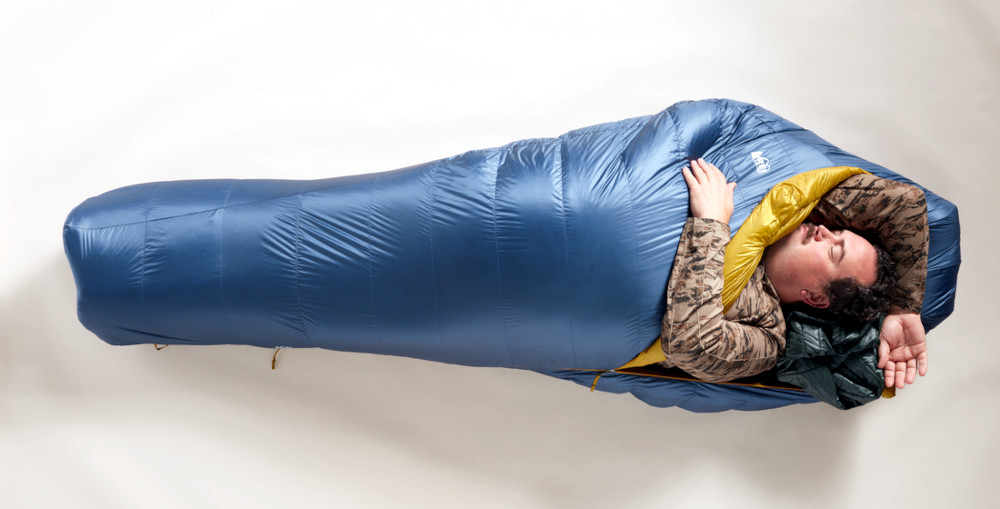If you step into any of REI Co-op’s 181 US locations
this fall, you’re bound to see a broader range of sizing across several
technical categories — in a first for an industry that’s short on, well, short
sizes and has largely stuck to a model that mostly caters to “typical” bodies
and builds.
“(Early on), we took a pretty big bet on sales and inventory investment; and now
we’re starting to see both of those turn,” REI divisional VP of merchandising
April Zito told
Sustainable Brands® (SB).
In 2018, REI released an initial batch of a broader range of sizes in response
to customer feedback — it began a multi-year journey to figure out how to build
a product structure that better supported a wider range of bodies while also
eliminating excess and increasing efficiencies. A big milestone was in 2021,
when the co-op analyzed more than 150,000 data points from consulting partner
Alvanon to conceptualize what the size and fit of this
larger range would look like. It’s not a finished science; but today, a customer
can walk into an REI store and find no less than ten different sizes in popular
apparel items (such as jackets) and nine different options in sleeping bags.
“Hike, camp and snow are where we spend a lot of time creating the right product
assortment,” Zito adds.
Fostering broader change
 REI's Magma 30 sleeping bag now comes in three lengths and three widths | Image credit: REI
REI's Magma 30 sleeping bag now comes in three lengths and three widths | Image credit: REI
REI carries more than 1,400 brands in addition to its own; and all of those
brands must adhere to a lengthy list of Product Impact
Standards —
which, among other things, detail sizing and accessibility requirements.
Nani Vishwanath — senior
program manager for racial equity, diversity and inclusion (REDI) — told SB
REI understands that not all brands can instantly adapt to these new requirements in
size, scale, etc; but some of the company’s findings are open source. (A co-op
spokesperson added that REI is happy to share insights on its own-brand
approach, but companies should base their research on their specific brand’s fit
and size standards.)
REI holds workshops where brands can learn some of this knowledge and trade best
practices. They’re also important for communicating updates, such as REI’s
upcoming requirement for headwear and helmet manufacturers to introduce products that support high-volume and textured hair. As Vishwanath
recently shared during a panel
discussion
at SB’24 San
Diego, this
is also in direct response to consumer feedback.
She added that the outdoor outfitter has expanded the conversation around
gender and whether specific, gender-based sizing and releases are really the
path forward — as gender-neutral clothing and shared dress across “men’s” and
“women’s” clothing become more popular. In response, REI recently introduced
Active
Pursuits
— its first non-gendered apparel collection.
Furthering the co-op’s sustainability goals
Like most outdoor and outdoor-adjacent companies, REI has a set of
goals related to carbon reduction, waste
reduction and other key climate-action targets.
Waste reduction is where Zito sees the most potential in an inclusive sizing
line. Creating a broader size range of clothes that consumers will actually buy
leads to less stock and waste on the shelf — and perhaps will encourage
consumers to choose a more durable, activity-specific item versus heading
outdoors with something that’s not built to withstand those conditions.
“We were not 100 percent efficient when we launched, but we’re at a new place
now (with more efficiency),” she says.
Traditionally, sizes XXL and above would have an extra cost — due to the
thinking that they required more materials or special production lines. But the
co-op says last year it achieved price parity across all its brands and products
— regardless of size — which bodes well broader industry adoption of more
inclusive sizing*.*
According to Zito, Fall 2025 products will look similar to this season. REI will
invest in color and inventory with a larger focus on outdoor technical products
compared to the broader lifestyle category, which has dominated the outdoor
apparel space for the last several years.
“Not every brand has the capability to service all sizes, and we understand
that,” Zito says, “but what we don’t want to do is put the fit out there that
isn’t right.”
Get the latest insights, trends, and innovations to help position yourself at the forefront of sustainable business leadership—delivered straight to your inbox.
Geoff is a freelance journalist and copywriter focused on making the world a better place through compelling copy. He covers everything from apparel to travel while helping brands worldwide craft their messaging. In addition to Sustainable Brands, he's currently a contributor at Penta, AskMen.com, Field Mag and many others. You can check out more of his work at geoffnudelman.com.
Published Nov 5, 2024 8am EST / 5am PST / 1pm GMT / 2pm CET